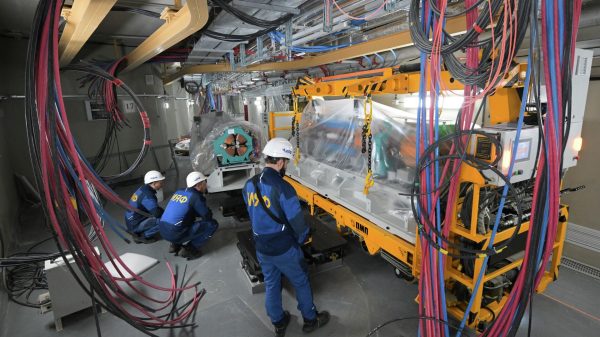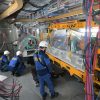Model predicts instability in plasma 300 milliseconds in advance
Fusion scientists say they have found a way to overcome one of their biggest challenges to date — with artificial intelligence.

Artificial intelligence can be used to search for almost limitless clean energy. Nuclear fusion has been touted for decades as a virtually limitless source of clean energy that could transform solutions to the climate crisis.
There are several ways to produce fusion energy, but the most common involves using hydrogen variants as the starting fuel and raising the temperature to unusually high levels in a donut-shaped machine known as a tokamak to create plasma, a soup-like state of matter.
Researchers from Princeton University and the Plasma Physics Laboratory reported in the journal Nature that they have found a way to use artificial intelligence to predict potential instabilities and prevent them from occurring in real time.
The team conducted their experiments at the National Fusion Facility DIII- D in San Diego and found that an artificial intelligence controller could predict a potential plasma rupture 300 milliseconds in advance. Without this intervention, the fusion reaction would have ended suddenly.
“The experiments lay the groundwork for using artificial intelligence to solve a wide range of plasma instability problems that have long hampered fusion,” explains a Princeton spokesman.
The findings are “definitely” a step forward in the field of nuclear fusion, according to according to professor of mechanics Egemen Colemen.
«That's one of the biggest obstacles — failures — and you want any reactor to run around the clock for seven years without any problems,» Coleman told CNN. “And this type of failure and instability would be very problematic, so developing solutions like this increases their confidence that we can run these machines without any problems.”
Fusion energy is a process that powers The sun and other stars and experts have been trying to master it on Earth for decades. This is achieved when two atoms that would normally repel each other are forced to fuse together. This is the opposite of the type of nuclear fission widely used today, which is based on the splitting of atoms.
Scientists and engineers near the English city of Oxford set a new fusion energy record earlier in February, generating 69 megajoules of fusion energy in five seconds using just 0.2 milligrams of fuel. This is enough to power approximately 12,000 households for the same period of time.
But this experiment still used more energy as input than was generated. Another team in California, however, managed to produce a net amount of fusion energy in December 2022 in a process called «ignition.» They have since repeated this action three times.
Despite promising progress, fusion power is still a long way from becoming commercially available — well beyond the years when deep and sustainable Reducing pollution that is causing a warming planet.
Scientists stress that such pollution reductions are needed this decade.




















































Свежие комментарии